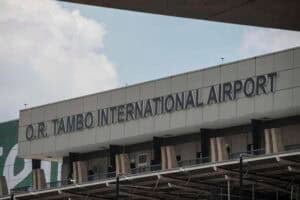Here is a timeline of the conflict in Africa's second most populous country.

Ethiopian Prime Minister Abiy Ahmed urged people to join the armed forces as fighting rages in and around the restive northern region of Tigray.
Here is a timeline of the conflict in Africa’s second most populous country.
– Troops enter Tigray –
Fighting begins on November 4, 2020 when Abiy orders a military response to what he calls a “traitorous” attack on federal army camps in Tigray.
He blames it on the region’s ruling Tigray People’s Liberation Front (TPLF), which dominated Ethiopian national politics for nearly three decades before Abiy took office in 2018.
The TPLF denies responsibility and says the reported attack is a pretext for an “invasion”.
Tens of thousands of refugees flee to neighbouring Sudan as the United Nations and African Union demand an end to the fighting.
– ‘War crimes’ –
After 10 days of fighting, the UN warns of possible war crimes in Tigray.
Neighbouring Eritrea — with which Abiy signed a peace deal in 2018 that helped him win the Nobel Peace Prize — is reported to have sent troops into Tigray to help Abiy.
This video is no longer available.
– Capital falls –
Two weeks later, having rejected peace talks, Abiy launches an offensive on Tigray’s capital Mekele.
On November 28 he announces military operations in Tigray are “completed”, but fighting continues, hindering aid supplies.
– ‘Ethnic cleansing’ –
In February 2021 Amnesty International says Eritrean soldiers killed “hundreds of civilians” in November in the holy city of Axum.
US Secretary of State Antony Blinken later urges Eritrea to withdraw and describes violence in western Tigray as “ethnic cleansing”.
– Axum massacre –
For months Ethiopia and Eritrea deny the involvement of Eritrean forces in the conflict.
But on March 23 Abiy admits Eritrean troops had crossed into Tigray.
The next day the Ethiopian Human Rights Commission says Eritrean soldiers massacred more than 100 civilians in Axum.
– Withdrawal? –
In early April, Ethiopia says Eritrean troops have “started to evacuate” Tigray, but on April 15 the UN says there is no evidence of withdrawal.
– Famine –
As international outrage mounts, AFP obtains government documents showing that Eritrean troops are looting and blocking food aid.
In late May, US President Joe Biden calls for a ceasefire and says rights abuses “must end”.
In June the World Food Programme says 350,000 risk famine in Tigray, a statement disputed by the Ethiopian government.
– No elections in Tigray –
Elections are held on June 21 across much of Ethiopia, but not in Tigray.
– Deadly market air strike –
At least 64 people are killed and 180 injured in an Ethiopian air strike on a market in Togoga on June 22.
The attack was aimed at rebel fighters, Ethiopia’s military insists.
– Rebel advance –
Tigray’s interim government flees on June 28 in the face of a rebel advance on Mekele.
The federal government announces a “unilateral ceasefire”. The rebels vow to fight on if strict conditions are not met.
– New assault –
Tigrayan forces say on July 12 they have pushed south.
The attacks come barely two days after election results showed Abiy’s party had won the elections, guaranteeing him a new five-year term.
Abiy vows on July 14 to repel attacks.
On July 15 three Ethiopian regions deploy forces to back military operations in Tigray.
– Conflict spreads –
The conflict spreads to two neighbouring regions, Afar and Amhara.
Rebels from Tigray on August 5 seize Lalibela, a UNESCO World Heritage site in Amhara.
– Population called up –
The next day they rebuff US calls to leave neighbouring regions and Ethiopia warns it could deploy its “entire defensive capability”.
On August 10 Abiy calls for all eligible civilians to join the armed forces.






